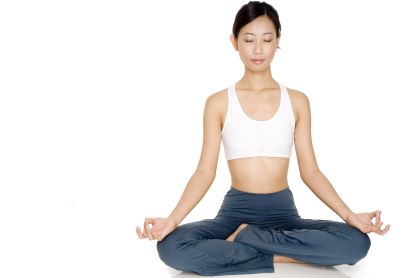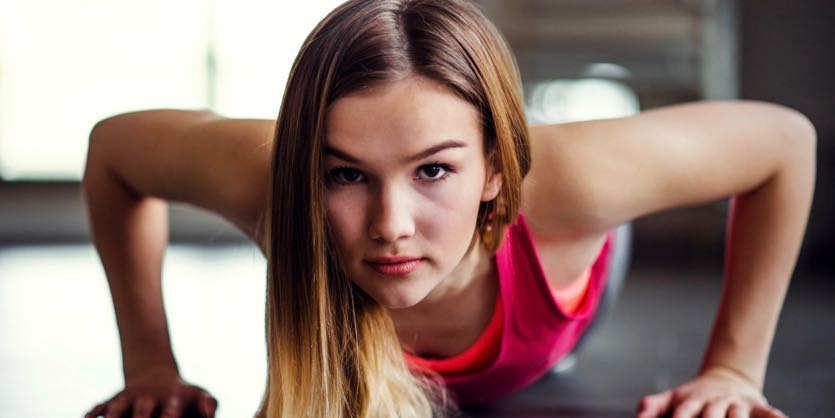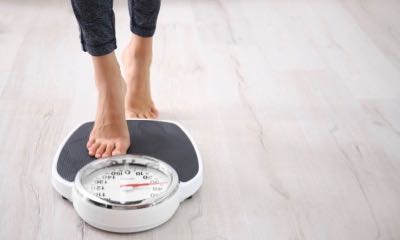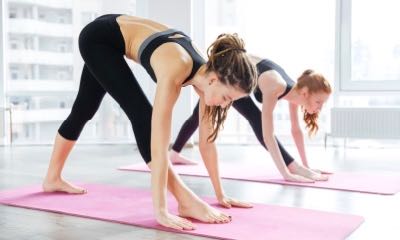Neurotransmitters are the language of your brain. They allow neurons to communicate to other brain cells. That’s not it, though. Muscles receive cues from neurotransmitters, too. In fact, these chemical messengers send information throughout the body.
The different types of neurotransmitters vary widely. Some manage your heart rate and blood pressure. Others make you feel motivated, stabilize your mood, or help you fall asleep.
To understand how neurotransmitters work in your body, let’s study the most notable chemical messengers. And you’ll learn how important they are for your brain and body.
How Neurotransmitters Help Your Body Communicate
Communication is key to your health. Neurotransmitters do that work, sending instructions from one brain cell to the next and transferring information throughout the brain and body.
The process starts where these chemical messengers are stored in tiny compartments at the end of neurons. These are called synaptic vesicles. Neurotransmitters live here until your brain needs to relay a message.
When a neuron makes a command (known as firing an action potential) neurotransmitters spring into action. These action potentials temporarily boost neurons into a higher energy state. More energy means brain cells can dump chemical neurotransmitters into the space between them and the next neuron. This gap between neurons is called the synapse.
Neurotransmitters are then collected from the synapse by neighboring neurons after an action potential sparks. A chain reaction follows. Each brain cell releases neurotransmitters to spread the message. When the command is completed, the neurotransmitters break down, float away, or are taken back up by the synaptic vesicles they came from.
Understanding 7 Major Neurotransmitters
While there are dozens of known neurotransmitters, there are seven major ones to focus on. They fall into two different types, depending on their actions.
Some are excitatory neurotransmitters. This means they encourage other brain cells to fire commands. Other neurotransmitters are considered inhibitory. They stop action potentials and help your brain turn actions off. Both are useful and necessary for your body to function at its best.
Familiarize yourself with each of the major chemical messengers that influence your health. They do a lot to keep your body and brain working in tandem.
1. Glutamate
This amino acid is common in your diet. And it acts as an excitatory neurotransmitter, stimulating neurons to fire commands. Glutamate isn’t just in your diet. It’s present in 90 percent of synapses, acting as the main excitatory neurotransmitter in the central nervous system.
It only takes a small amount of glutamate to excite neighbor brain cells. When neurons are working properly, all the glutamate released by the cell is picked back up by glutamate transporter molecules. This ensures levels of glutamate remain low in the synapse.
Too much glutamate can be tricky for your brain. Excesses can over-excite cells. So much so that neurons can’t bring their energy back down again. This toxic excited state causes brain cells to lock up and stop working. Good thing those transporter proteins are there to clear away the extra glutamate and protect your brain by cleaning up the synapse after each action potential.
Neuroplasticity also relies on glutamate. That’s because your brain uses glutamate to build pathways between neurons that reinforce your memory and help you learn.
2. GABA (γ-aminobutyric acid)
If glutamate is the most excitatory chemical messenger, then GABA is its polar opposite. GABA is a main inhibitory neurotransmitter. It reduces the activity in the central nervous system and blocks certain signals from your brain.
Without GABA, your brain would be “on” all the time. You need GABA to produce a calming effect that slows you down. It lowers your heart rate and blood pressure. GABA helps you relax and fall asleep. The normal stresses of your life respond well to GABA.
Take time to wind down before bed. Reducing your exposure to blue light can support the production of GABA in your brain. Deep breathing and mindfulness meditation can boost GABA, too. Helping you lower stress and fall asleep faster.
3. Dopamine
The most thrilling neurotransmitter has to be dopamine. That’s because it plays a major role in your brain’s reward system.
Dopamine floods the synapse between neurons when something rewarding happens. It’s responsible for that rush of joy when you accomplish a goal or succeed at a task. Dopamine perks your brain up and brings feelings of pleasure.
Some drugs prey on your brain’s reward system. They stimulate the brain to release an overabundance of dopamine. This creates a temporary sensation of pleasure, or a high. But coming down from a dopamine high is a hard fall. Afterward, you might feel depressed, tired, and less interested in your favorite activities.
Drugs aren’t the only way to mess with the normal dopamine levels in your brain. Addictive activities like video gaming, gambling, and shopping create similar highs. The surge of dopamine in your brain can make these habits hard to shake. That’s why it’s so important to understand how dopamine works so you can keep these behaviors in check.
Dopamine has plenty of positives, though. It encourages wakefulness. It helps your pancreas release the appropriate amount of insulin after you eat. Dopamine also coordinates your brain and your body to create voluntary movement. Writing your name, typing, and driving a car are all possible because of dopamine.
4. Adrenaline (Epinephrine)
If you have ever been spooked before, you know the feeling that comes from adrenaline—also called epinephrine. This neurotransmitter is responsible for your body’s fight or flight response.
Adrenaline is produced by adrenal glands located above your kidneys. But the chemical messenger works throughout the central nervous system to ramp up your heart rate and bring oxygen to your muscles quickly.
Why do you need adrenaline if you may never be in a true fight or flight scenario with a predator chasing you? Because your daily life provides plenty of situations where a similar—less life-saving—response is needed.
Adrenaline is your body’s defense mechanism against stress. If you’re running late and are afraid to miss your plane, epinephrine speeds up your breathing and heart rate so you can run through the security line.
Theme parks profit by taking advantage of adrenaline. They capitalize on the thrill a jolt of adrenaline can bring. It can make you feel jumpy in a haunted house or make your palms sweaty while you ride a rollercoaster.
Adrenaline sharpens your decision making, too. You can feel it kick in when you’re taking a test in school. Neurotransmitters like adrenaline can help your body to know how your brain wants to respond to stressful situations.
5. Serotonin
Take a break from your brain and shift your focus to your gut. Serotonin is an important brain chemical that does a lot of its work in your small intestine, too.
Serotonin in your digestive tract promotes feelings of satisfaction after eating and keeps your appetite in check. When a food you eat doesn’t sit well with your stomach, serotonin helps your body get rid of it.
Rotten or spoiled foods can make you feel nauseous. That’s because serotonin kicks in when you eat a potentially toxic food. It triggers your brain to make you feel queasy and helps your bowel dispose of the food quickly.
In your brain serotonin works a bit differently. It has a lot of influence over your mood, promoting feelings of wellbeing and happiness. Serotonin also helps you achieve more restful sleep and sets your body’s internal clock.
A serotonin imbalance can happen. When the brain doesn’t produce enough serotonin, you might experience a lower mood and sleeplessness. Confusion and brain fog may even set in.
On the other hand, too much serotonin coursing through your brain can be more dangerous. Some illegal drugs cause your brain to dump all of its serotonin stores into the synapse at once. This sudden spike in serotonin and later crash is called serotonin syndrome. It can create paranoia, impair your judgement, and negatively impact your memory. So, safeguard your brain’s supply of serotonin to maintain the delicate balance.
6. Oxytocin
Let’s debunk some myths about oxytocin. This neurotransmitter is much more than the “love hormone.” It’s more than the cuddly chemical messenger it’s been made out to be.
Oxytocin is a powerful neurotransmitter that affects many bodily functions. Your brain makes oxytocin in the hypothalamus and releases it via the pituitary gland to trigger responses all over the body.
Oxytocin urges the walls of the uterus to contract when a woman delivers her baby. This same chemical messenger fosters the bond between mother and child immediately following birth. Oxytocin also makes breast feeding possible, and stimulates the release of milk from mammary glands.
Men, don’t feel left out—oxytocin plays a significant role in your body, too. It helps your brain form strong connections of loyalty and trust. This helps you create important relationships with friends and family.
Be grateful for the chemical messenger the next time you interact with the people you care about. Your body needs oxytocin for its physical and social health— to live and love.
7. Acetylcholine
It may be last on this list, but this neurotransmitter was the first discovered in the human body. Acetylcholine is unique because it directly affects your muscles.
Acetylcholine works at the neuro-muscular junction. That’s the point where your nervous system and muscles meet. When acetylcholine is released from neurons, receptor proteins on muscle fibers take hold of it. Then the presence of acetylcholine triggers an action potential or command in the muscle fiber. But instead of sending signals to a brain cell, acetylcholine makes your muscle contract.
Every time you move your muscles, acetylcholine is in play. This can be voluntary movements or unconscious ones like your heartbeat or the contractions of peristalsis that moves food through your digestive tract.
Muscle movements aren’t all acetylcholine does for you. Your brain’s learning and memory functions are also impacted by this important neurotransmitter.
Apply Your Neurotransmitter Knowledge
Now that you know how neurotransmitters work, consider ways to help them be more efficient for your health.
Planning for enough sleep each night is a great way to give your brain a break that’s possible because of GABA.
Serotonin keeps your gut happy by eliminating foods that upset your stomach. So, eat plenty of protein to restore the serotonin levels in your gut.
You can increase the production of oxytocin by holding your kids close and spending quality time with the people you love.
And you can keep your dopamine levels in check by keeping an eye out for addictive behavior creeping into your daily routine.
Take a minute to appreciate all the work neurotransmitters do in your body. From your heartbeat to your breathing, digestion, and bonding, chemical messengers keep your brain and your body communicating.
References
https://qbi.uq.edu.au/brain/brain-physiology/what-are-neurotransmitters
https://www.hormone.org/your-health-and-hormones/glands-and-hormones-a-to-z/hormones/adrenaline
https://www.healthline.com/health/dopamine-vs-serotonin#takeaway
https://www.medicalnewstoday.com/articles/232248#deficiency-symptoms
https://www.healthline.com/health/epinephrine-vs-norepinephrine#takeaway
https://sites.bu.edu/ombs/2016/10/12/the-mystery-of-oxytocin/
https://www.sciencedirect.com/topics/neuroscience/neurotransmitters
https://nba.uth.tmc.edu/neuroscience/m/s1/chapter13.html
https://www.verywellmind.com/what-is-a-neurotransmitter-2795394
https://en.wikipedia.org/wiki/Glutamate_(neurotransmitter)#Disease,_disabilities,_and_pharmacology
https://www.healthline.com/health/gamma-aminobutyric-acid#uses
https://www.webmd.com/vitamins/ai/ingredientmono-464/gamma-aminobutyric-acid-gaba























































